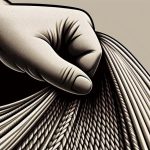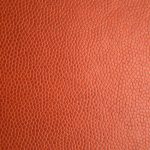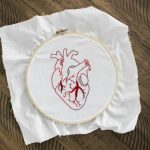Do you want to know what linen duck fabric is? Look no further! In this article, we will delve into the origins, composition, characteristics, and properties of linen duck fabric.
We will also explore the different weave patterns, common uses, and applications of this versatile material. Additionally, we will provide tips on how to care for linen duck fabric and discuss its benefits and drawbacks.
So, if you’re curious about linen duck fabric, keep reading to learn all about it!
Table of Contents
The Origins of Linen Duck Fabric
You might be wondering where linen duck fabric originated from. Well, let’s delve into its origins and history.
Linen duck fabric has a rich history that dates back centuries. It is believed to have originated in ancient Egypt, where linen was a prized textile. The Egyptians used linen for various purposes, including clothing, sails, and burial shrouds. Linen duck fabric, with its durable and sturdy nature, was particularly well-suited for sails and other heavy-duty applications.
As trade routes expanded, linen duck fabric found its way to Europe, where it gained popularity during the Middle Ages. It was commonly used for making tents, awnings, and other outdoor structures. The term ‘duck’ actually comes from the Dutch word ‘doek,’ which means cloth or canvas.
Over time, linen duck fabric became widely used in the manufacturing of upholstery, draperies, and workwear due to its durability and versatility. It continued to be a staple fabric in various industries, including agriculture and transportation. Even today, linen duck fabric is highly regarded for its strength and natural properties.
Understanding the Composition of Linen Duck Fabric
In this discussion, you’ll gain a comprehensive understanding of linen duck fabric.
First, let’s break down its composition.
Next, we’ll explore how linen compares to other fabrics in terms of its properties and characteristics.
Fabric Composition Breakdown
With a breakdown of fabric composition, linen duck fabric is known for its durability and breathability. It is made from 100% linen fibers, which are derived from the flax plant. Linen is a natural fiber that is highly resistant to wear and tear, making linen duck fabric a popular choice for heavy-duty applications. Additionally, linen duck fabric is known for its strong weave, which further enhances its durability.
In terms of color options, linen duck fabric offers a wide range of choices. It can be dyed in various colors, allowing for versatile design possibilities. Whether you prefer vibrant hues or earthy tones, linen duck fabric can be customized to suit your preferences. This makes it a versatile choice for upholstery, clothing, and home decor projects.
To visualize the different color options available for linen duck fabric, refer to the table below:
| Color Options |
|---|
| Bright Red |
| Navy Blue |
| Forest Green |
Linen Vs. Other Fabrics
When comparing linen to other fabrics, it’s important to consider factors such as durability, breathability, and color options.
Linen has gained popularity for its exceptional durability. Its fibers are strong and resistant to wear and tear, making it suitable for long-lasting use.
Additionally, linen is highly breathable, allowing air to circulate freely, keeping you cool and comfortable in hot weather. This breathability also helps to prevent the growth of bacteria and odor.
Linen is also known for its wide range of color options. From soft pastels to vibrant hues, linen offers a variety of choices to suit any style or preference.
Common Uses and Benefits
One of the benefits of linen is its versatility, as it can be used in a variety of different ways. Linen duck fabric, in particular, is known for its durability and eco-friendliness. The tightly woven linen fibers make it resistant to tearing and fraying, ensuring that it can withstand everyday use and last for a long time.
Additionally, linen is a natural and sustainable material, making it an environmentally friendly choice. Linen duck fabric is commonly used for upholstery, curtains, and home décor items due to its strength and ability to hold its shape. It is also a popular choice for bags, backpacks, and other accessories that require a sturdy and reliable material.
With its durability and eco-friendly properties, linen duck fabric is a versatile and sustainable option for various applications.
Characteristics and Properties of Linen Duck Fabric
The characteristics and properties of linen duck fabric make it a versatile and durable material. Linen duck fabric is known for its exceptional fabric durability, making it a popular choice for various applications. Its tight weave and strong fibers ensure that it can withstand heavy use and frequent washing without losing its shape or strength. This makes it an ideal choice for upholstery, curtains, and other home furnishings that need to withstand daily wear and tear.
In addition to its durability, linen duck fabric is also highly sustainable. Linen is derived from the flax plant, which requires less water and pesticides compared to other crops like cotton. This makes linen duck fabric an environmentally friendly choice for those who are conscious of their ecological footprint. The natural properties of linen also make it breathable and hypoallergenic, making it suitable for those with sensitive skin or allergies.
Overall, linen duck fabric offers a combination of durability and environmental sustainability that is hard to beat. Its versatile nature and ability to withstand heavy use make it a reliable choice for a wide range of applications, while its eco-friendly properties make it a responsible choice for those who care about the environment.
Different Weave Patterns in Linen Duck Fabric
When it comes to the weave patterns in linen duck fabric, there are several options to choose from. Each weave pattern offers its own unique benefits, ranging from increased durability to enhanced breathability.
Understanding the different weave patterns can help you make an informed decision when selecting linen duck fabric for your project.
Weave Pattern Options
Linen duck fabric offers a range of weave pattern options for customization. Whether you prefer a plain weave or a twill weave, linen duck fabric has you covered. The weave pattern you choose can also affect the fabric’s durability. A twill weave adds strength and resilience, making it suitable for heavy-duty use. On the other hand, a plain weave offers a lighter and softer fabric that is still durable for everyday use. So, take your pick and enjoy the versatility and durability of linen duck fabric.
Benefits of Different Weaves
Choose the weave pattern that best suits your needs and preferences, as it can greatly impact the durability and texture of your fabric. The importance of weave cannot be overstated when it comes to creating the desired characteristics in your fabric.
Here are five different types of weave patterns and their benefits:
- Plain weave: Offers a balanced structure and is highly durable.
- Twill weave: Provides a diagonal pattern and increased strength.
- Satin weave: Creates a smooth and lustrous fabric with a luxurious feel.
- Basket weave: Gives a textured appearance and improved breathability.
- Jacquard weave: Enables intricate and detailed designs in the fabric.
Each weave pattern has its own unique qualities, allowing you to tailor your fabric to suit your specific needs. Whether you prioritize durability, texture, breathability, or design, the right weave pattern can make a significant difference in the final outcome of your fabric.
Common Uses and Applications of Linen Duck Fabric
One of the most popular applications for linen duck fabric is in upholstery for furniture. Linen duck fabric is known for its durability and strength, making it a perfect choice for furniture that is subject to heavy use. One of the advantages of linen duck fabric is that it comes in different weights, allowing you to choose the one that best suits your needs. The heavier weights are ideal for upholstery, as they provide more support and durability.
In addition to upholstery, linen duck fabric is also used in a variety of other applications. It is commonly used in the manufacturing of bags and totes, due to its strength and ability to hold heavy items. Linen duck fabric is also used in home decor, such as curtains and tablecloths, due to its natural and rustic appearance.
Another benefit of linen duck fabric is that it can be easily dyed using various techniques. It can be dyed in solid colors or can be used as a base for prints and patterns. This versatility makes it a popular choice for designers and artists.
Overall, linen duck fabric is a versatile and durable material that can be used in a variety of applications. Whether you are upholstering furniture or creating home decor items, linen duck fabric is a reliable choice.
How to Care for Linen Duck Fabric
Now that you know about the common uses and applications of linen duck fabric, let’s talk about how to care for it.
Linen duck fabric is a durable and versatile material, but it does require some special care to keep it looking its best. Here are some caring tips and washing instructions to help you maintain your linen duck fabric:
-
Read the Care Label: Always check the care label on your linen duck fabric for specific instructions.
-
Gentle Machine Wash: Generally, linen duck fabric can be machine washed on a gentle cycle with mild detergent.
-
Cold Water: Use cold water to wash your linen duck fabric to prevent shrinking.
-
Avoid Bleach: Avoid using bleach or harsh chemicals, as they can damage the fabric.
-
Air Dry: After washing, air dry your linen duck fabric by laying it flat or hanging it up to prevent wrinkles.
Taking proper care of your linen duck fabric will help prolong its lifespan and maintain its appearance. By following these caring tips and washing instructions, you can ensure that your linen duck fabric continues to look beautiful and serve you well for years to come.
Exploring the Benefits and Drawbacks of Linen Duck Fabric
When caring for linen duck fabric, it is important to consider the benefits and drawbacks of this versatile material.
Linen duck fabric is known for its durability and strength, making it a popular choice for upholstery, home decor, and even clothing.
One of the main benefits of linen duck fabric is its ability to withstand heavy use and frequent washing. Its tight weave and sturdy construction make it resistant to tears and fraying, ensuring that it will last for years to come.
Additionally, linen duck fabric has a natural resistance to stains and dirt, making it easier to clean and maintain. However, it is important to note that linen duck fabric can be prone to wrinkling and shrinking when exposed to high heat.
To keep your linen duck fabric looking its best, it is recommended to wash it in cold water and air dry or tumble dry on low heat.
Overall, with proper care and maintenance, linen duck fabric can be a durable and stylish choice for all your textile needs.
Conclusion
In conclusion, linen duck fabric is a versatile and durable material that has been used for centuries. With its strong weave and natural composition, it is ideal for a range of applications including upholstery, clothing, and home decor.
However, it does require proper care to maintain its quality and longevity. Overall, linen duck fabric offers many benefits such as breathability, strength, and resistance to stretching.
Considered all its properties and characteristics, linen duck fabric is a reliable choice for various projects.
- How Does Ring Spun Cotton Affect Garment Fit and Shape Retention? - August 13, 2024
- What Are the Challenges in Producing Ring Spun Cotton? - August 13, 2024
- Is Ring Spun Cotton Suitable for Plus-Size Clothing? - August 13, 2024





